I recently expanded my reading list beyond fiction and business books to a book by the Dalai Lama. And surprisingly, I found that his teachings mirror the core of good content marketing. So join me as I answer the question, “What would the Dalai Lama do as a content marketer?”
We marketers ruin everything. We really do.
Give us anything (the Internet, Facebook, any sporting franchise anywhere) and we’ll commercialize it. We’ll figure out a way to turn it into a money-making machine — exploit it, if you will.
In referring to the Dalai Lama’s teachings in this post, I was worried I’d be doing the same thing. But as you’ll find out, I don’t think that’s the case. Because at the core of content marketing is helping people and being altruistic. And that’s what the Dalai Lama is all about.
Marketers ruin everything…even the Dalai Lama
A little background. It was January 1, and I decided to turn over a new leaf by focusing 2019 on reading more. I should clarify: Reading more books.
There’s nothing like a book to really deep dive into a subject. One of the first books on my list was Live in a Better Way: Reflections on Truth, Love, and Happiness — a collection of teachings from the Dalai Lama (compiled by Renuka Singh).

I started reading it the morning of January 1, 2019. Five inches of snow had blanketed Madison, Wisconsin, and the tree branches out my back window were outlined in a skeletal white. I sat down in my favorite reading chair, threw the old-lady afghan over my legs, and dove in.
The first topic — and the biggest takeaway from the book — was the concept of interdependence. Being a shallow fella (and the owner of a content marketing firm), I immediately equated it with content marketing.
See? Marketers can’t help ourselves. We ruin everything.
The need for interdependence and the meaning of “emptiness”
The Dalai Lama explained interdependence in terms of “emptiness.”
This state of emptiness is a goal for Buddhists. I admit the concept is confusing to me, largely because of semantics. When I think empty, I picture an empty gas tank, or worse, a fridge devoid of pilsners and porters.
But the Dalai Lama provided a definition I’d never encountered before:
“Since all things are interdependent, independent identities or entities don’t exist. When we investigate the ultimate nature of everything, we find it is the absence of independent existence. This is what we mean by ‘empty.’ ”
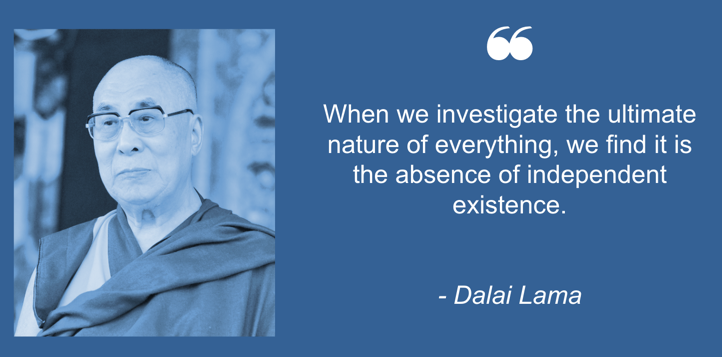
There it is: We are all interdependent. We rely on our friends, family and society at large to help us live and thrive in this world.
Think about every aspect of your life: You rely on other people to some varying degree. From the water you use to brush your teeth; to the energy to power your refrigerator; to the heat in your house; to the warmth of a morning hug (if you’re fortunate to receive one).
You simply can’t go it alone. That’s a good thing. The more interwoven we are with others, the happier we are, and the longer we’re likely to live.
A meta study of 148 studies (with over 300,000 participants) indicated a 50% increased likelihood of survival for participants with stronger social relationships, regardless of age, sex, initial health status, and even cause of death.
But how does being interdependent translate to content marketing?
We’ve blogged repeatedly about the need to be collaborative in your content. Collaborative content means integrating other experts and influencers, and using their insights and data to provide a more enlightening experience.
This is the core of our approach at Winbound, and it’s proven to be highly successful. Check out the growth charts for four of our clients, for example. Each experienced a dramatic upward turn in traffic when we adopted a collaborative approach to content marketing.
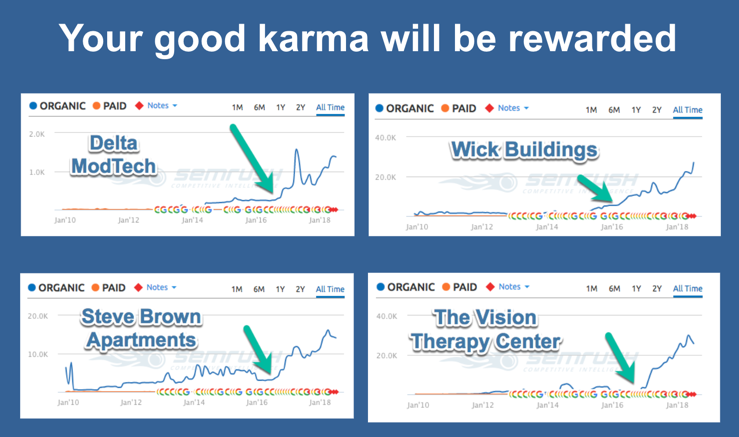
Getting down to the granular level, here’s a side-by-side comparison of two posts. One included 11 different collaborators who contributed insights. The other featured just one expert.
The post with multiple experts (the one on top) outperformed the single-collaborator post. (302 page views to 53; 6:00 minutes time on page to 3:50.)
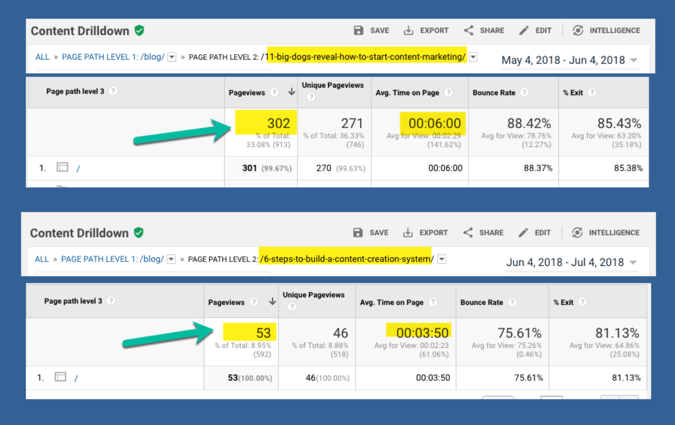
But collaborative content isn’t that easy. After all, if you sell widgets, how are you going to get outside experts to weigh in on the value of your widgets?
Look to the top of the customer journey for true collaboration
Asking people to write about the value of your product or service isn’t collaborative content. It’s a testimonial. True collaboration occurs at the top of the inbound marketing funnel / aka the sales funnel / aka the customer journey.
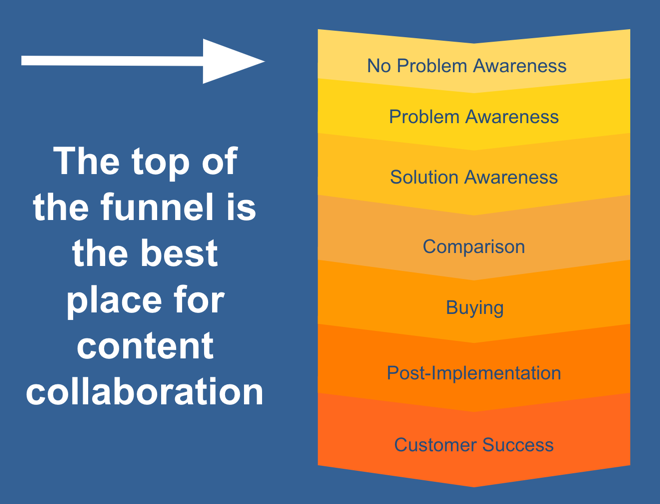
At the top of the sales funnel, the customer may not know about your product or your company. Heck, they may not even know they have a problem you can solve.
But they do have challenges that are specific to their persona — a wide range of challenges.
Let’s say you are selling sunscreen. A potential customer planning for a vacation might not be thinking about sunscreen (yet). They’re focused on where to go for their vacation. And that’s where your top-of-funnel content can shine.
You can provide insights about the best sun-soaked vacation spots. Even better, you can reach out to travel bloggers for their insights on top destinations. Integrate their thoughts into the post.
Blam — you’ve got a collaborative post, complete with expert insights. You’ll also likely gain access to your collaborators’ social networks, as they’ll likely share the post. Play your cards right and they’ll even link to the page from their site (the Holy Grail!).
Bottom-of-the-funnel content: Time to get independent
Ok, so the ultimate nature of everything involves the absence of independent existence. You must be interdependent. But how the heck do you sell your dang widget?
There is a point where you definitely need to get independent. It’s at the bottom of the customer journey: the sales / landing page. Here’s where your company will become far less collaborative, and far more focused on features and benefits of your product and a call to action.
That’s not saying there isn’t plenty of room for collaboration at this stage. You should be leaning heavily on your own internal company experts to make the page great, as well as your customers. Bottom-of-the-funnel content can include:
- Key benefits consumers care about
- Data supporting the value of your product
- Questions your salespeople hear your customers asking
- Testimonials and social proof from your customers
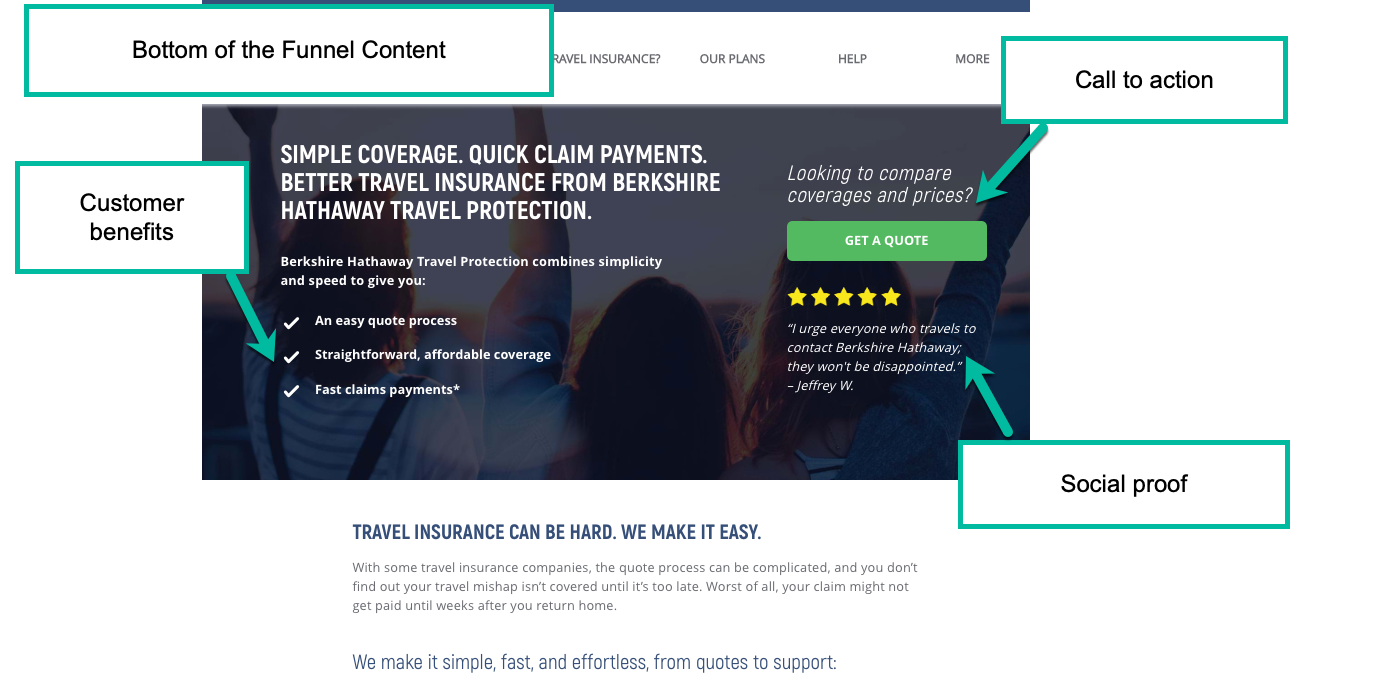
You can have your altruism and eat it too
Most people may have a preconceived notion about what the Dalai Lama is all about, or how his advice falls into that kind of “we’ll get to it on Sunday” mentality some people have toward spirituality or religion.
But the Dalai Lama is pragmatic about the approach. When your company becomes more altruistic, especially at the top of the content journey, you’re helping people and solving problems without necessarily selling products.
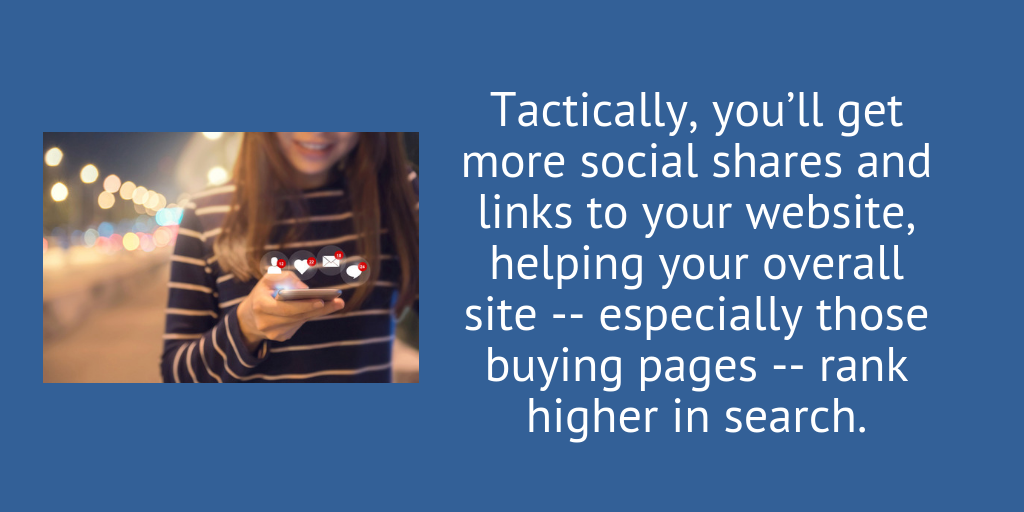
Helping other people can yield positive karmic results. Your name will get out there. You’ll generate goodwill toward your company. Tactically, you’ll get more social shares and links to your website, helping your overall site — especially those buying pages — rank higher in search.
Maybe we don’t ruin everything
In the end, the Dalai Lama explains that interdependence isn’t about being a bleeding heart or martyr. It’s actually a very pragmatic approach to success.
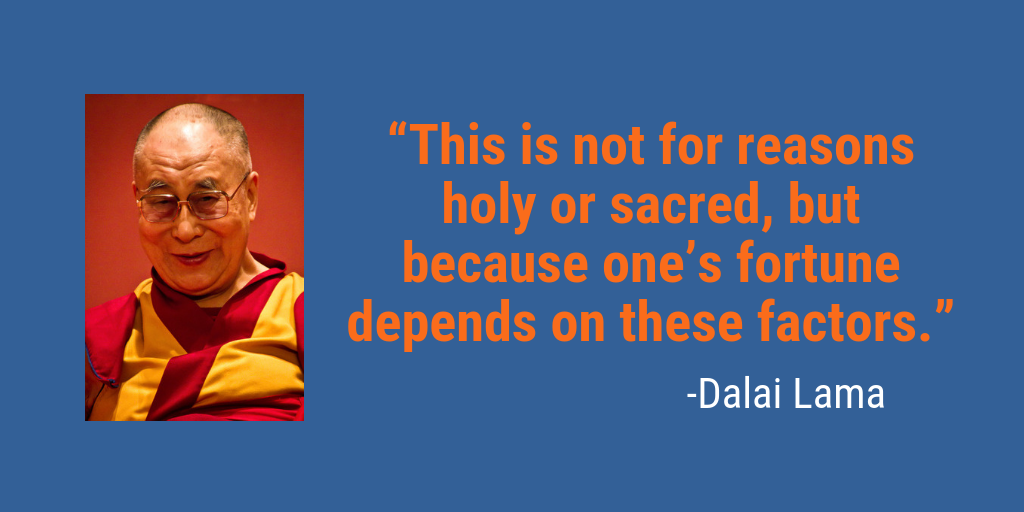
Once you understand how much your personal life is dependent on the surrounding environment, you will widen your perspective and your realization of reality. This automatically results in a sense of commitment and concern for others.
This is not for reasons holy or sacred, but because one’s fortune depends on these factors. This view is not only realistic, but is also the basis for secular moral ethics.
Good content marketing is…moral?…and ethical? Yes. Because when it’s done in the spirit of interdependence, you’re building your good fortune by helping others seek theirs.
So the question isn’t what would the Dalai Lama do as a content marketer — it’s what has he been doing? The answer is simple: He’s been helping people. And we’re all the better for it.
Find out how your content and conversion ranks with our interactive version of the Content Scorecard you can fill in yourself – no email required for download.

